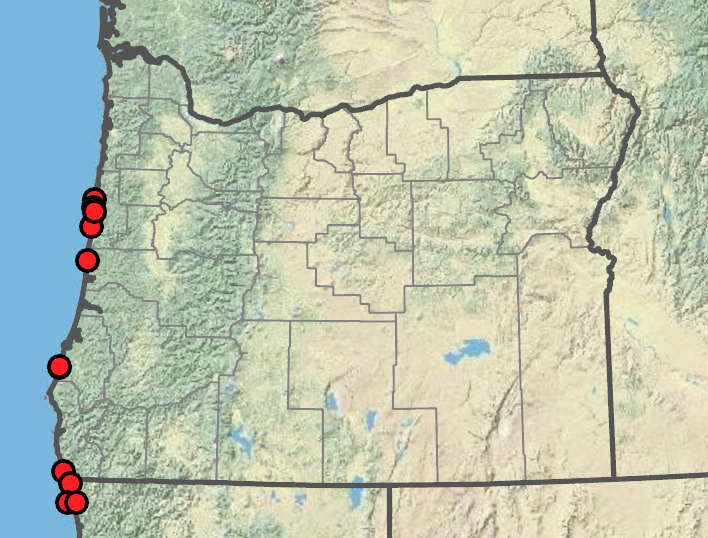Lasthenia maritima
maritime goldfields, seaside goldfields
lightly villous proximally, densely villous distally.
linear to narrowly or broadly elliptic, 15–55 × 2–18 mm;
margins regularly or irregularly dentate or lobed;
teeth triangular;
lobes linear;
tips obtuse;
surfaces glabrous to lightly villous.
hemispheric, 4–6 mm;
surfaces lightly villous.
few, inconspicuous;
corollas 3–5 mm, yellow, slightly exceeding involucres.
20–100+;
corollas 1.5–2 mm, yellow;
stamens included;
styles included.
5–8, not united; ovate;
tips acute to obtuse.
2.5–3 mm; black or grayish, minutely puberulent, pappi of 0–10+ scales and awns; up to 2 mm.
radiate;
peduncles 0.4–6 cm;
surfaces villous.
=8.
Lasthenia maritima
Rocky headlands, offshore islands. Flowering May–Jul. 0–50 m. Est. CA, WA, north to BC. Native.
The peculiar habitat of this species was first noted by Ornduff (1966), who considered it an adaptation to sites rich in bird guano. Like L. glaberrima, L. maritima is a self-pollinating species whose fruits are probably dispersed by migrating birds.
Kenton Chambers
- Local floras:
BC,
CA,
OR,
WA
- Local Web sites:
CalFlora,
CalPhotos,
Flora NW,
PNW Herbaria
WildflowerSearch
iNaturalist (observations)
USDA Plants Database
- LBJ Wildflower Center
- SEINet
- Plants of the World Online
- Encyclopedia of Life
- Wikipedia
- Google Image Search



